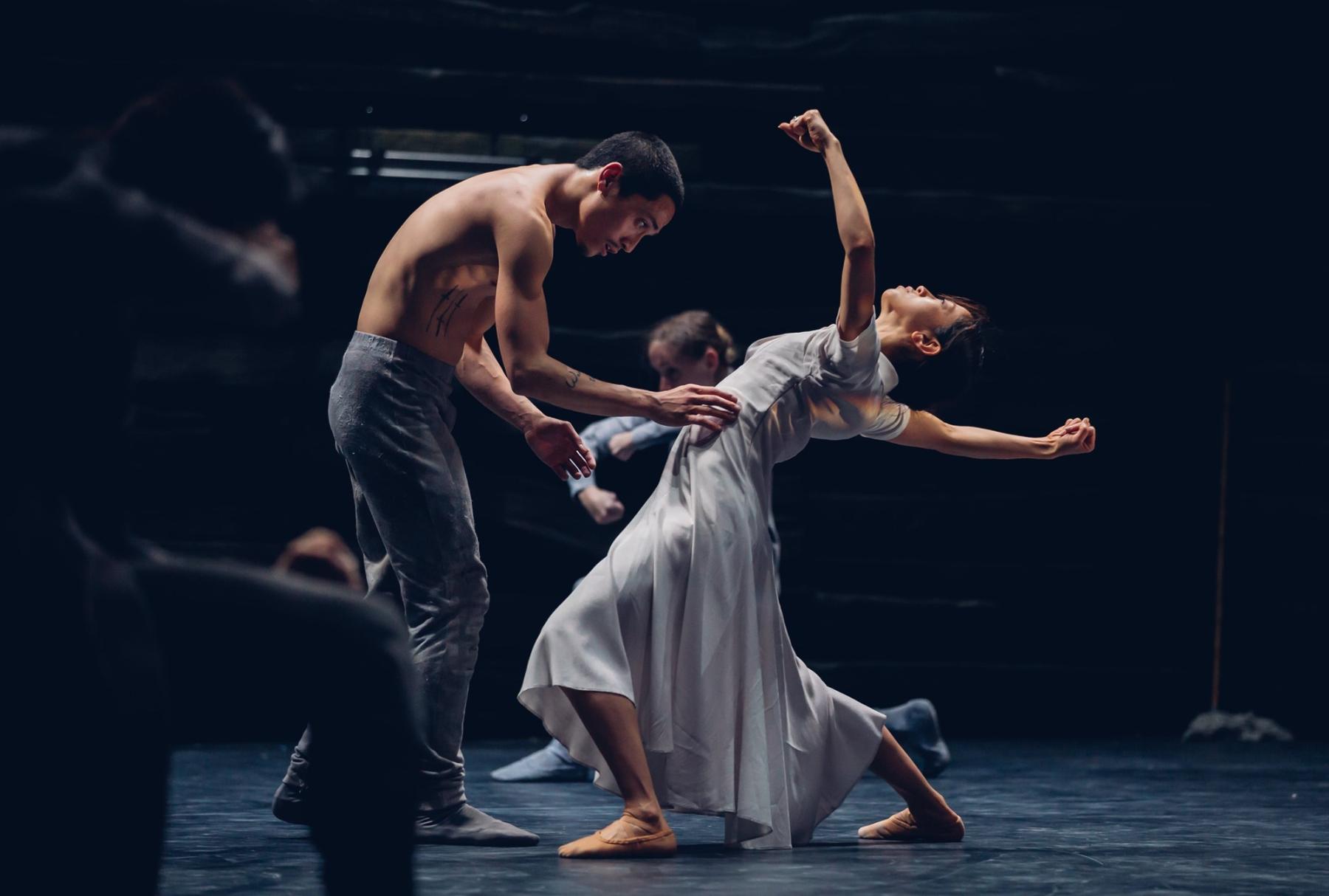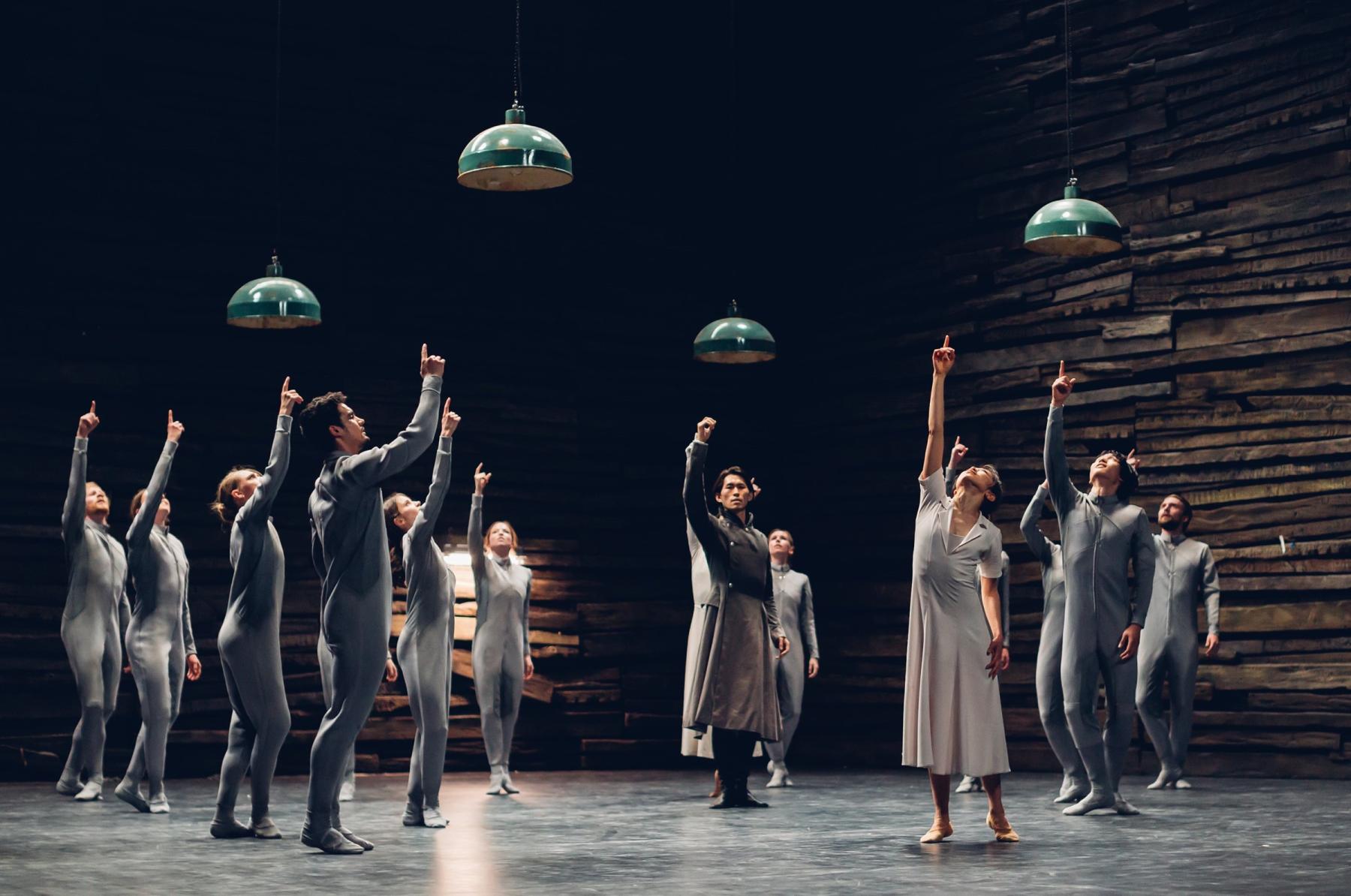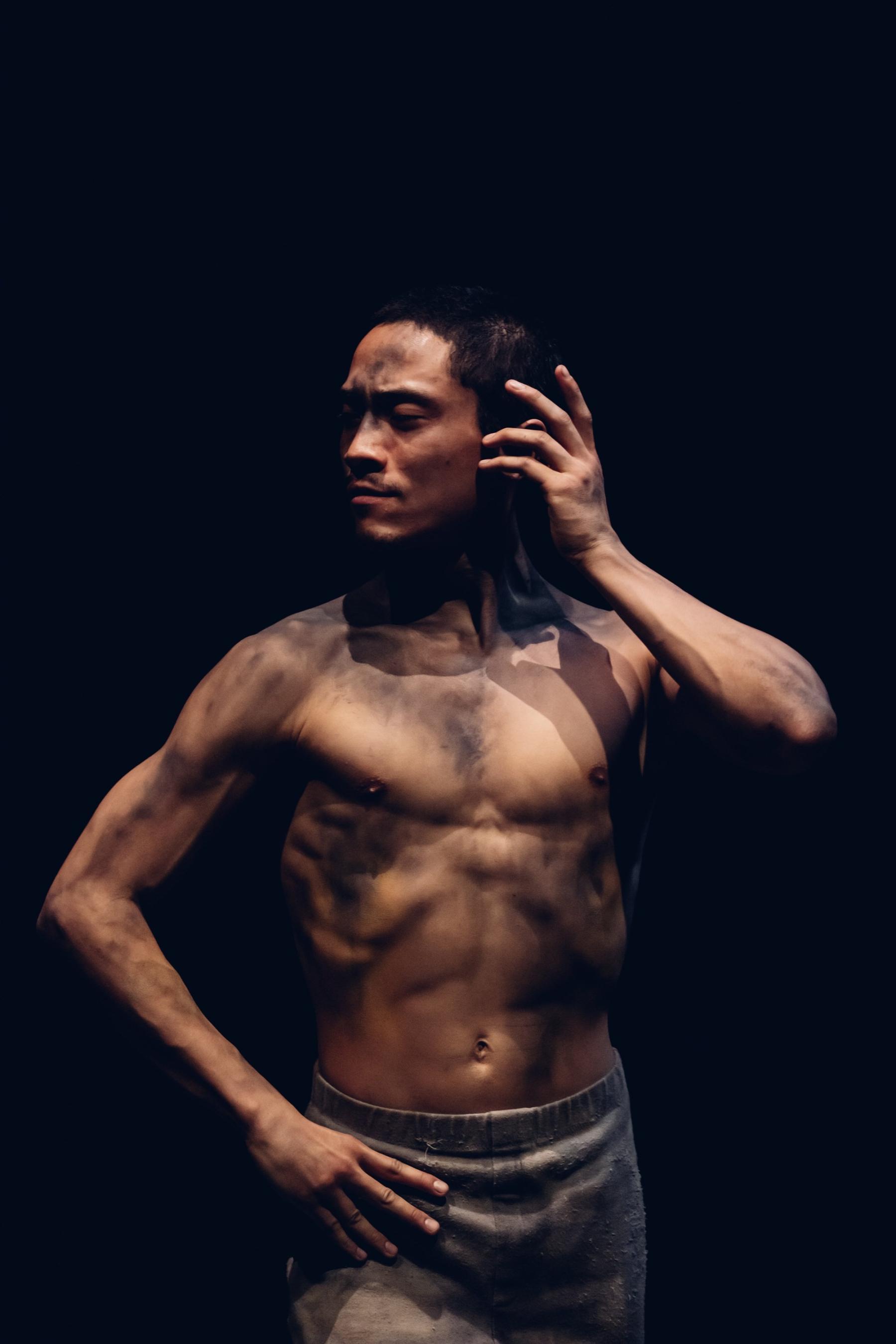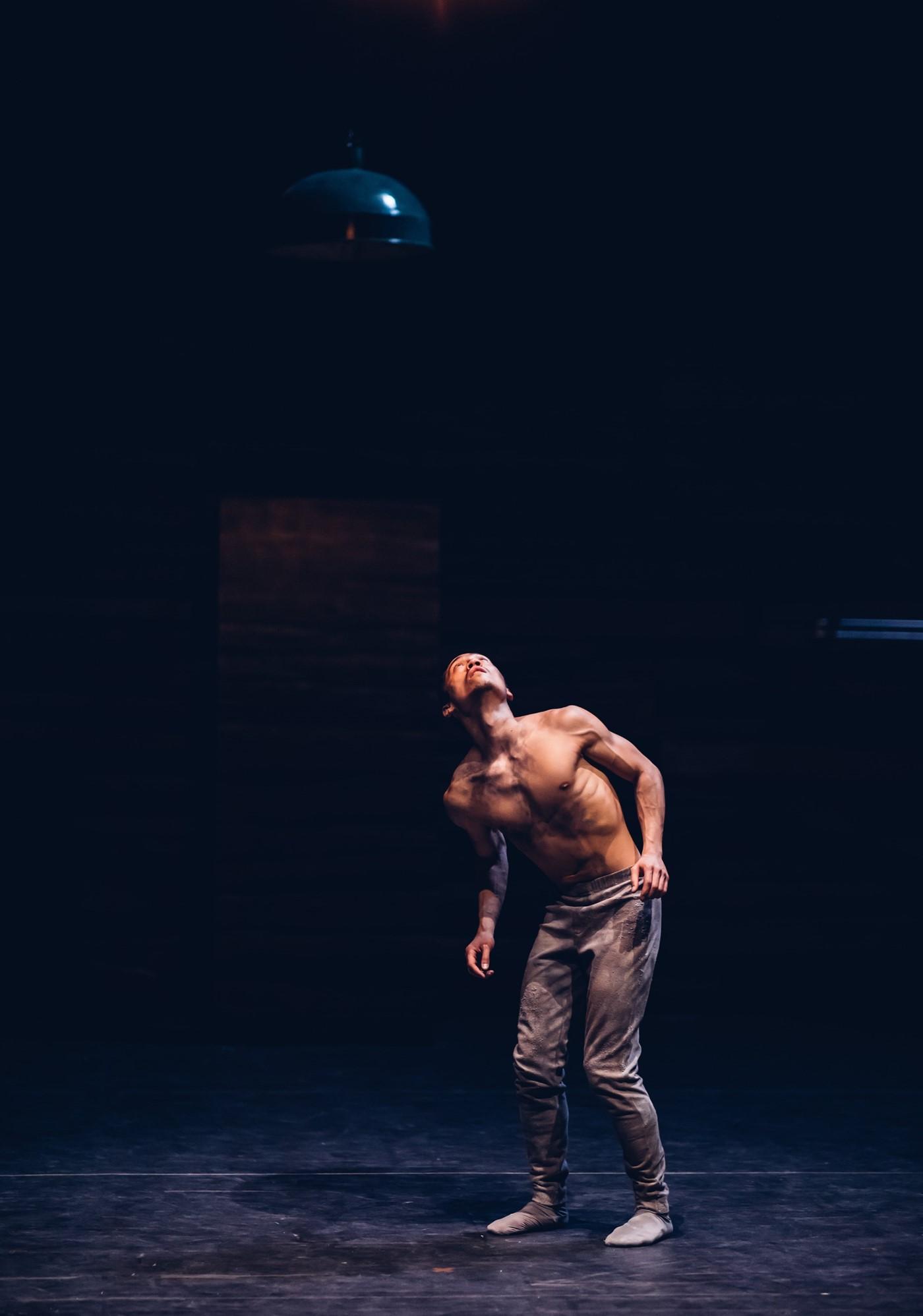Spectral Resurgence: Silent Cinema in Asif Kapadia and Akram Khan’s Creature
Asif Kapadia's latest film, Creature (2022), is a riveting work that forays into a cinematic exploration of bodies in motion. He has collaborated with the renowned British-Bangladeshi dancer Akram Khan and his dance company to film their rehearsals for a horror ballet. The British Film Institute (BFI) produced feature film shares its title with Khan's third production for the English National Ballet, after the success of Dust (2014) and the romantic-ballet Giselle (2018). The rehearsals were filmed at the White Box, a newly inaugurated premise of the English National Ballet in London. Creature was released in March 2023, and the live performance of the English National Ballet's Creature by Akram Khan Company was staged at the Sadler’s Well Theatre in London from 23 March to 1 April 2023.

Jeffrey Cirio as Creature and Erina Takahashi as Marie, the cleaning lady, in a still from Creature (2022) by Asif Kapadia.
Creature is a film devised under the impetus of “pure cinema”, which emphasises technical exploration in the creation of a narrative, without the aid of speech, language or dialogue. Pure cinema refers to moving images that rely on the choreography of movement and gesture to communicate meaning. It was predominant in the era of silent films but atrophied with the advent of the film “talkies” in the twentieth century. In Kapadia's film, action is propelled through the embodied movements and gestures of dancers, with an extensive use of diegetic sounds—such as scratching radio distortions to accompany the creature's convulsing epileptic seizures, pulsing heartbeats, hollow industrial clanging, and certain unfathomable words whispered darkly in the torture chambers and mental asylums.
In the process of filming the choreography, details of the diegetic sounds—the soft rustling of costume fabric that accompanies a specific movement, the dancers’ sighs of exhaustion or inhalations at a moment of panic—are all submerged by the loud thudding of the dancers’ feet on the studio floor. Often, these precursory sounds are necessary to amplify the emotional tone of the film. Kapadia highlights that sound designer Vincenzo Lamagna, who regularly works with the Akram Khan Dance Company, recorded the soundscape separately and sutured it to moving images in the post-production phase.

Ken Saruhashi as Captain in a still from Creature (2022) by Asif Kapadia.
The use of advanced film and sound technology to capture the bodily comportments of dancers leads to the spectral reappearance of obsolete technologies from the silent film era. Kapadia skillfully taps into this uncanny technical resurgence to enhance the paranoia, fear and terror that are usually associated with body-horror dance films. The plot revolves around Creature (Jeffrey Cirio), an outlier who is part of a neurocognitive research experiment at a nuclear station located in the Arctic. Creature is a racially discriminated, low-class subject held in a subordinate position to the rest of the crew on board. He has been recruited for a human experiment and they torture him to test the limits of his physical and mental endurance.
Soon, Creature begins to seek solace from Marie (Erina Takahashi), the cleaning lady, who is both a maternal figure and the object of his love. Aside from unethical torture in the human experiment, the plot takes a further turn to the noxious when Major (Fabian Reimair), the figure of paternal authority on the site, begins sexually abusing Marie. There is silence and complicity among the team members who are witnesses to the insidious abuse of power by Major, a reference to real-life predatory male figures in positions of authority whose actions can often be deliberately un-seen by their subordinates.

Still from Creature (2022) by Asif Kapadia.
The film begins with an archived audio of the American President, Richard Nixon’s telephone-radio wire, lauding Neil Armstrong and the crew of Apollo 11 for the historic landing on the moon. While Creature convulses in seizures induced by the haunting looped radio transmission, the images become distorted with magnetic scratches that usually appear on deteriorating VHS tapes. The ominous nuclear unit where the dance is being staged is a log cabin set; the camera occasionally focuses on the vacuum-florescent display of pulse rates on dry timber as they flash in sync with the rhythmic beats of Creature's racing heart. In the backdrop, Nixon's telephone wire repeats like a mantra: “Because of what you have done, the heavens have a become a part of man’s world.... And as you talk to us from the sea of tranquillity, it inspires us to redouble our efforts to bring peace and tranquillity to earth.”
Meanwhile, the dancers choreographically explore the textures of primal fear and apocalyptic doom at the nuclear site as the final frontier of human existence. The movements that depict an ongoing cognitive neurosis on a dark voyage beyond the earth are enthralling. Contrasted against the delirium of colonial extraction and an atomic holocaust, Khan's longstanding engagement with South-East Asian classical dance forms shines brilliantly. I will be exploring the subject further in the second part of this article. Kapadia's entanglement with the Akram Khan Company's dance rehearsals also led him to strategically move his cameras onstage. By repositioning the equipment between the moving bodies of the professional dancers and asking them to recalibrate the existing choreography to form a close relation to the technical apparatus, he has reoriented the future reception of this live performance and given it a cinematic afterlife.

Still from Creature (2022) by Asif Kapadia.
To read more about artistic visions of the body in future, revisit Annalisa Mansukhani’s essay on Tejal Shah’s practice and Prabhakar Duwarah’s conversation with Sharbendu De.
All images from Creature (2022) by Asif Kapadia. Images courtesy of BFI productions and the Akram Khan Dance Company for the English National Ballet.




